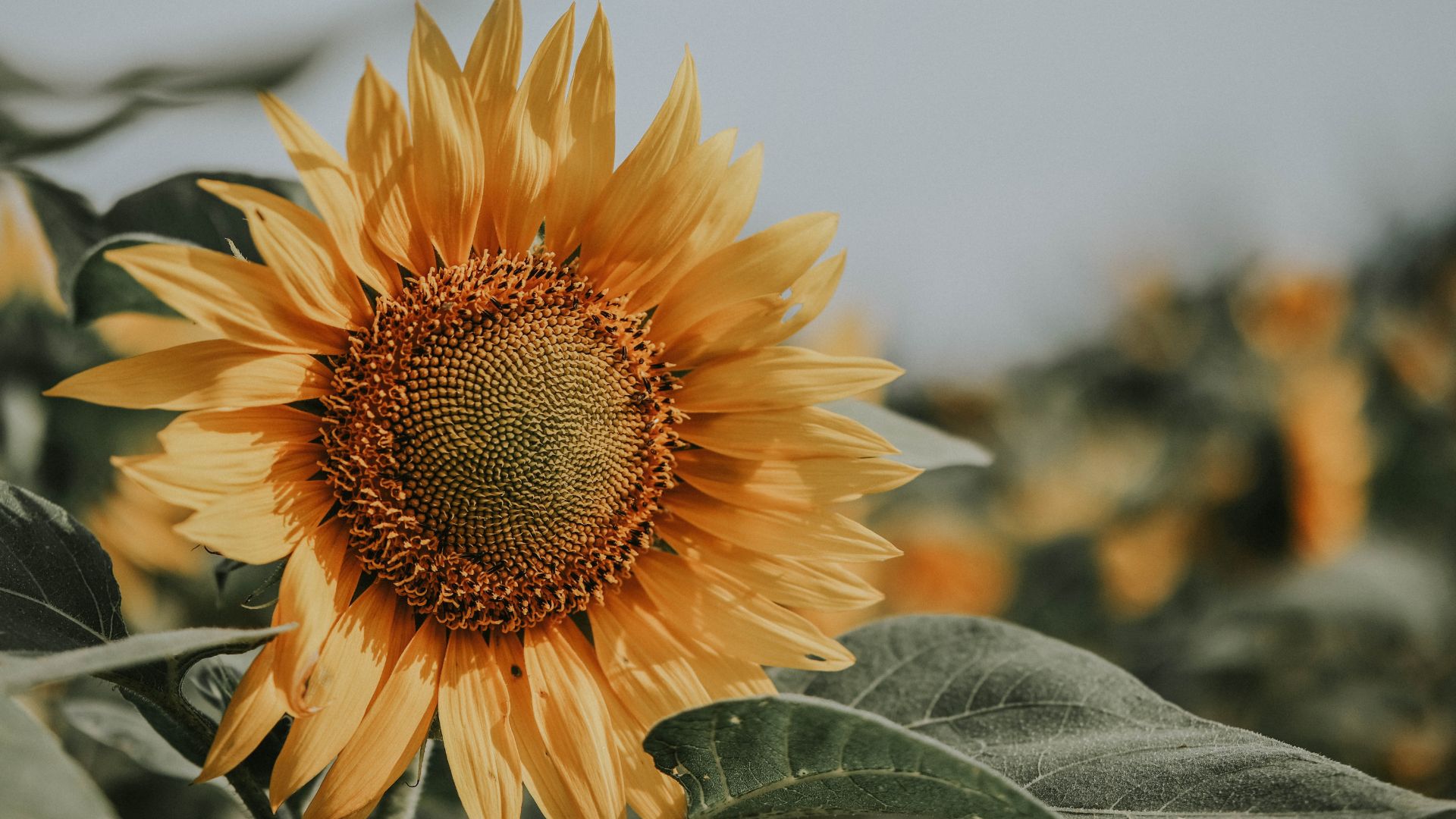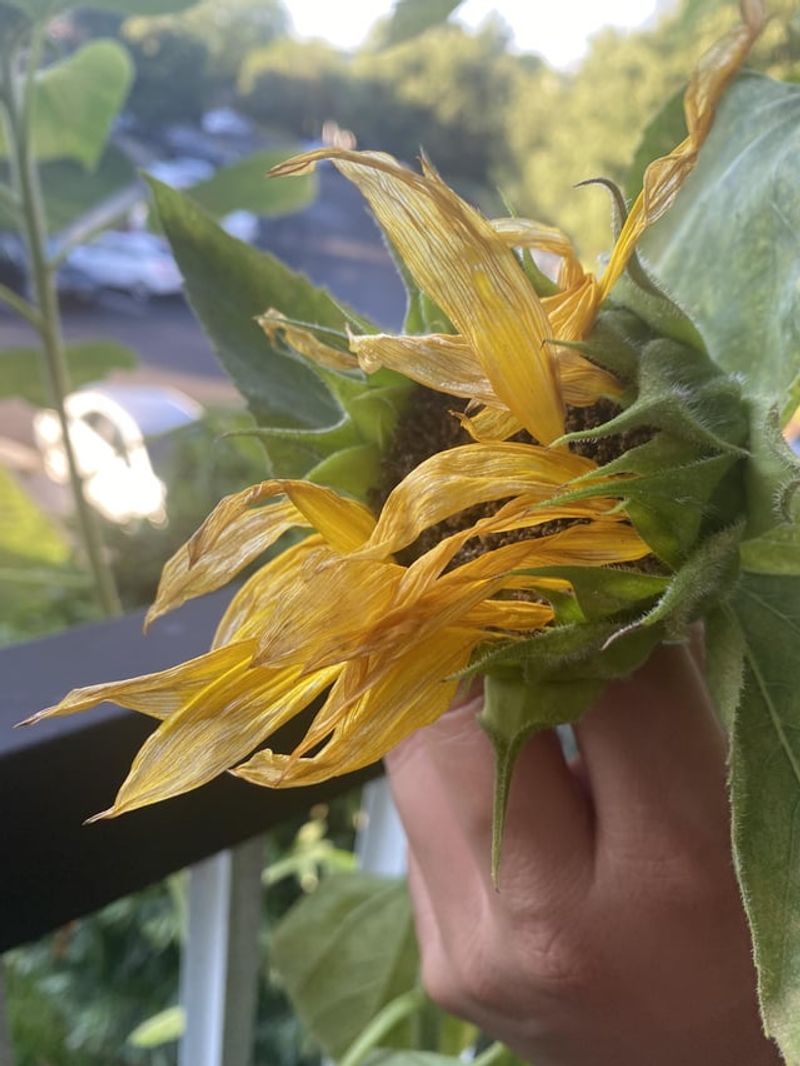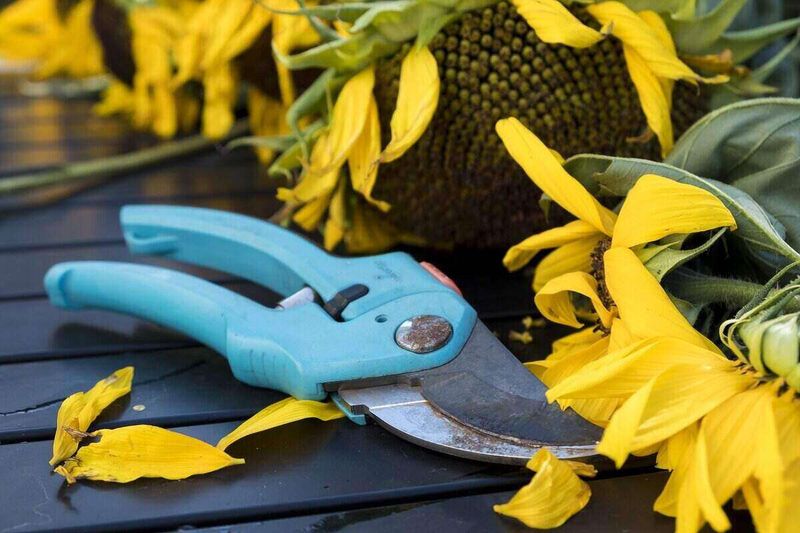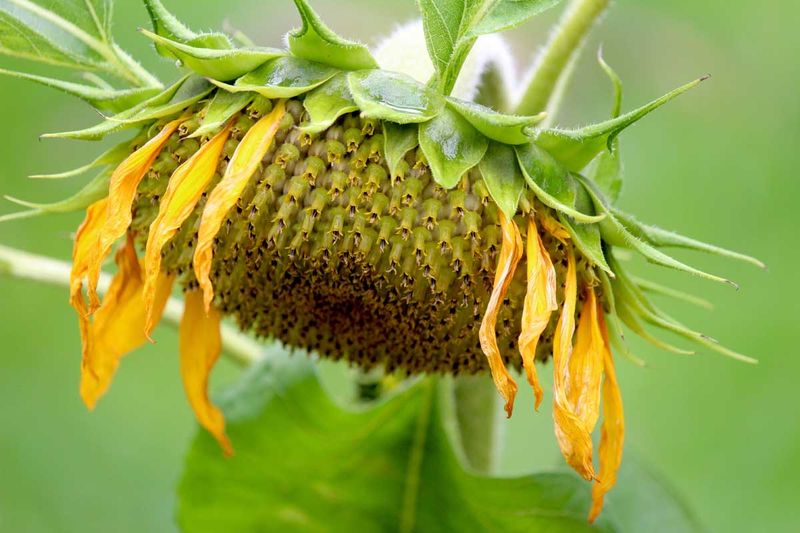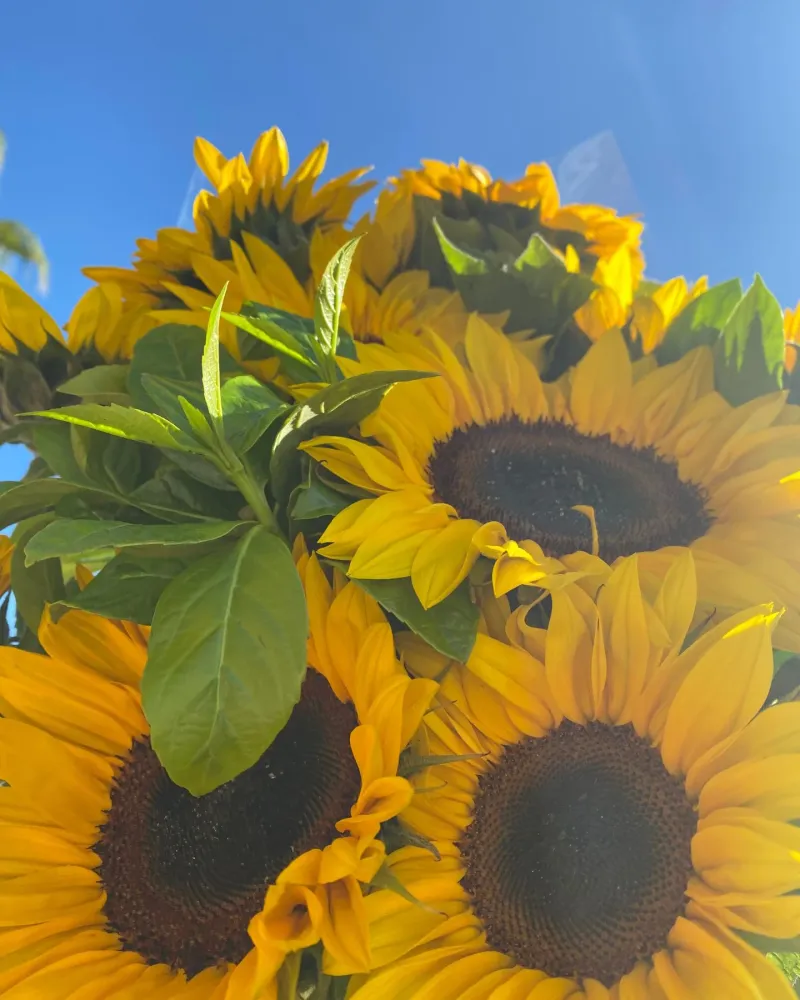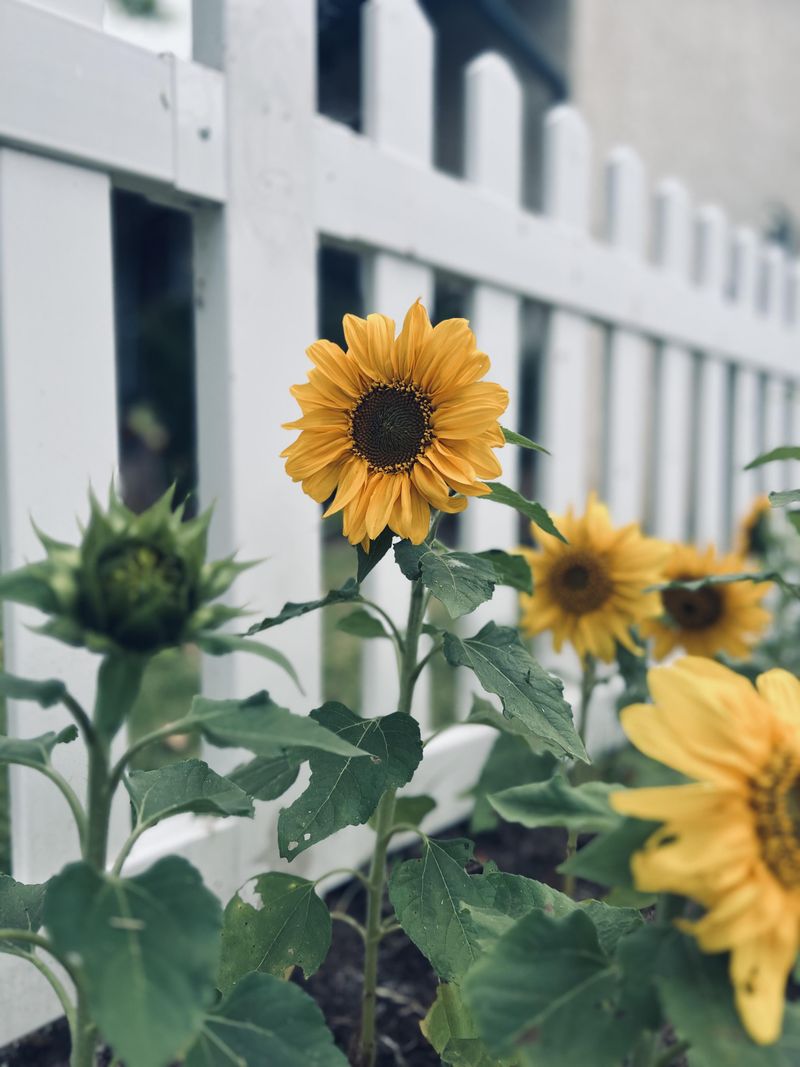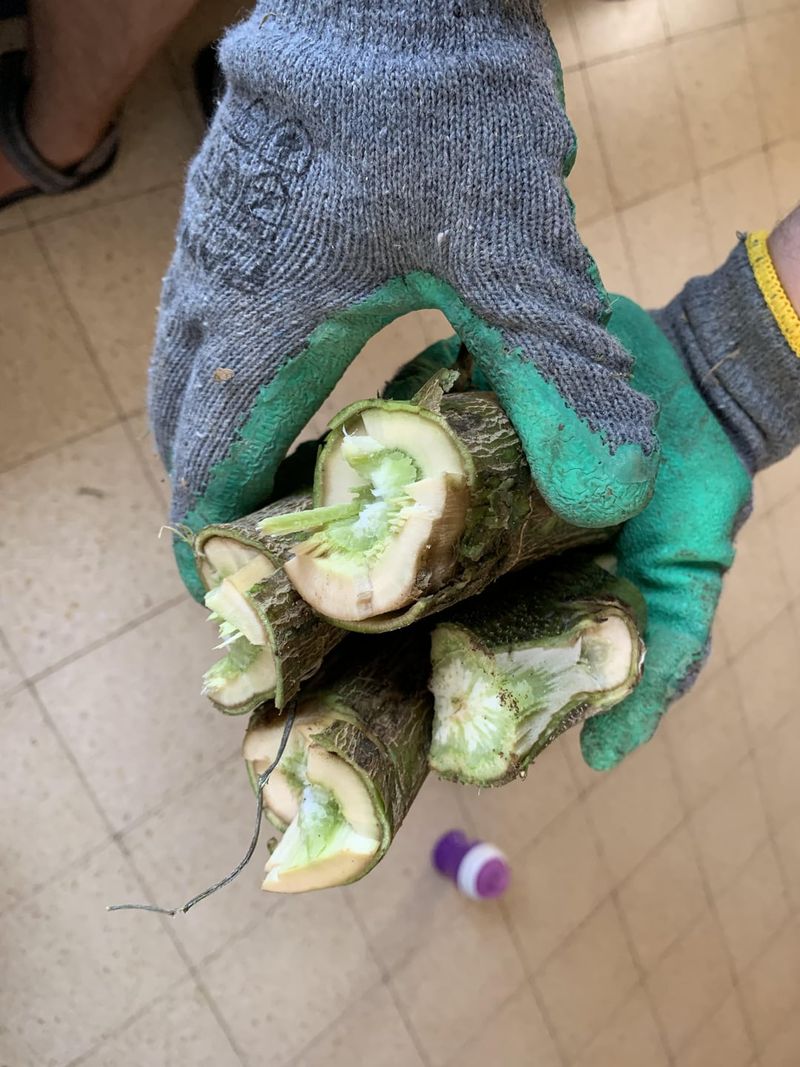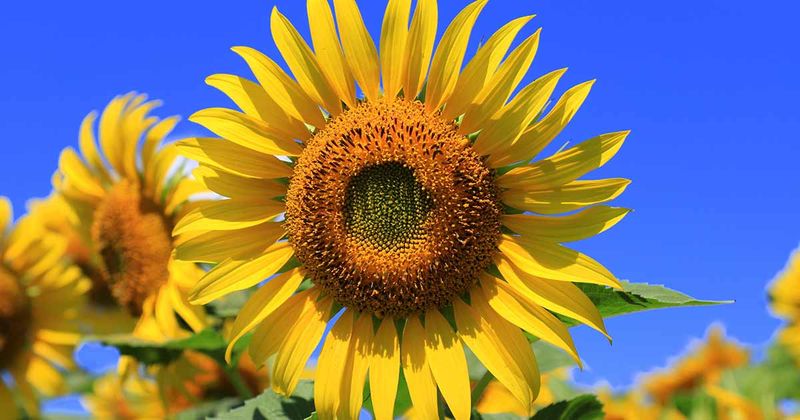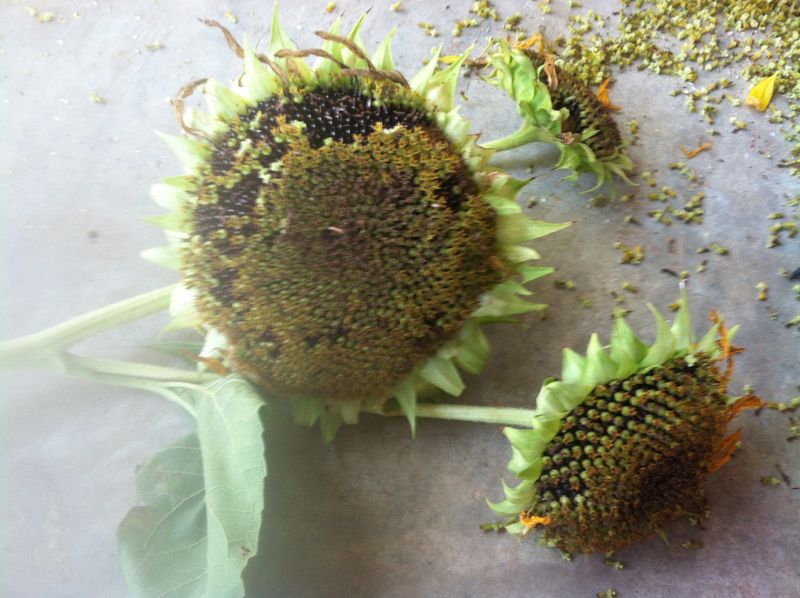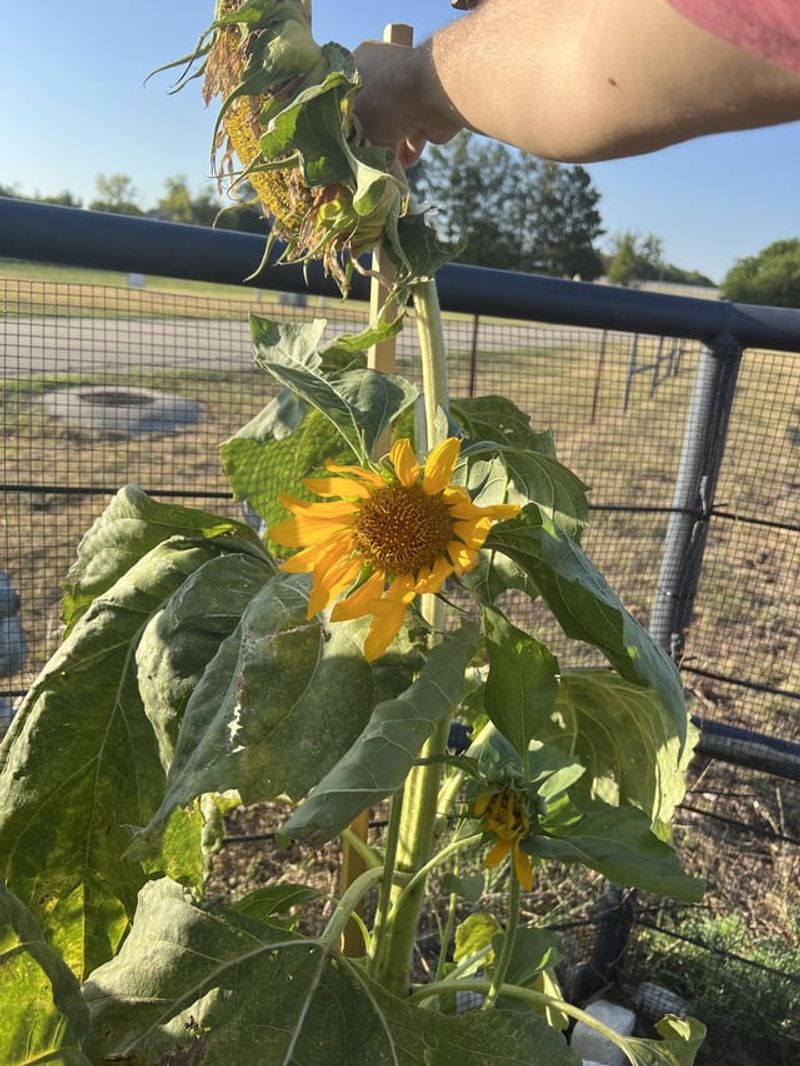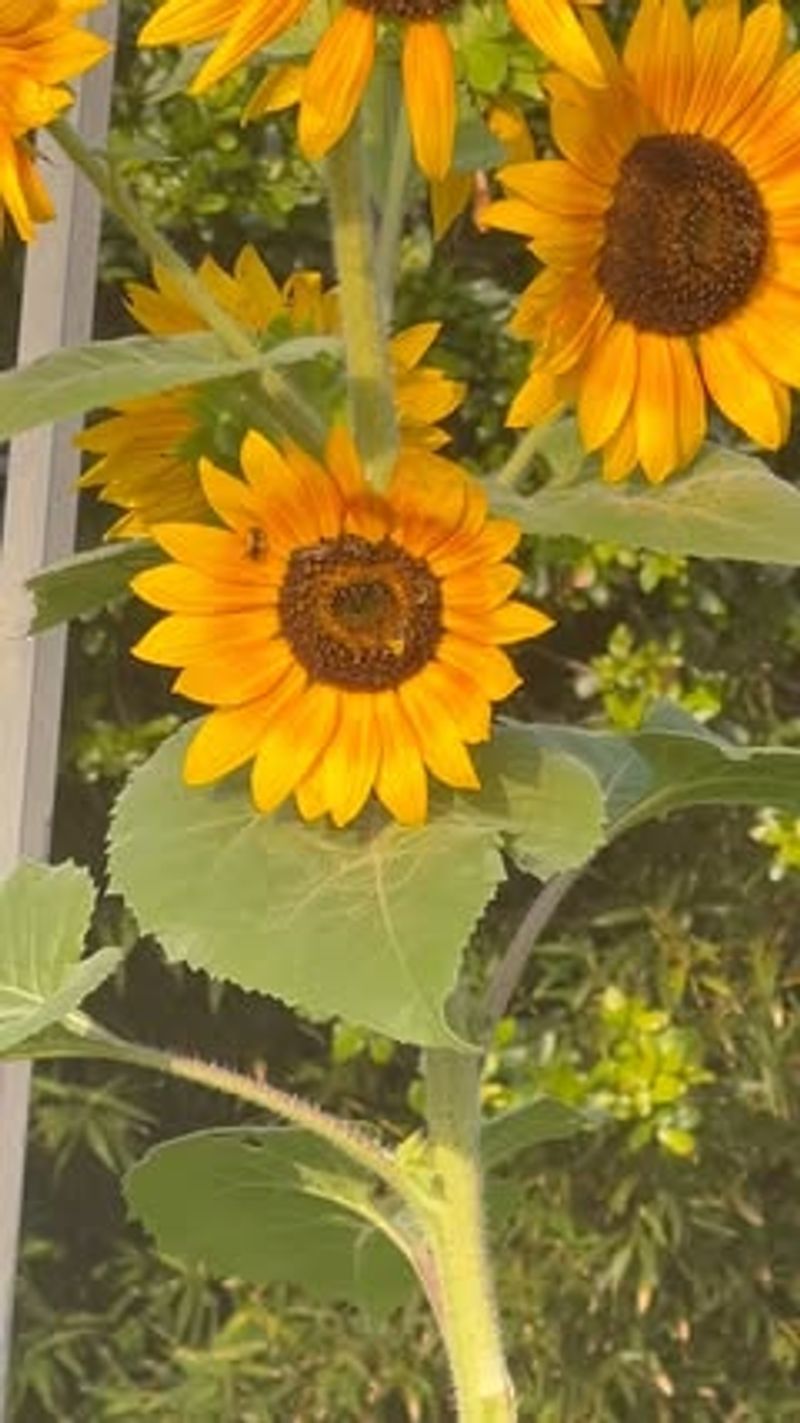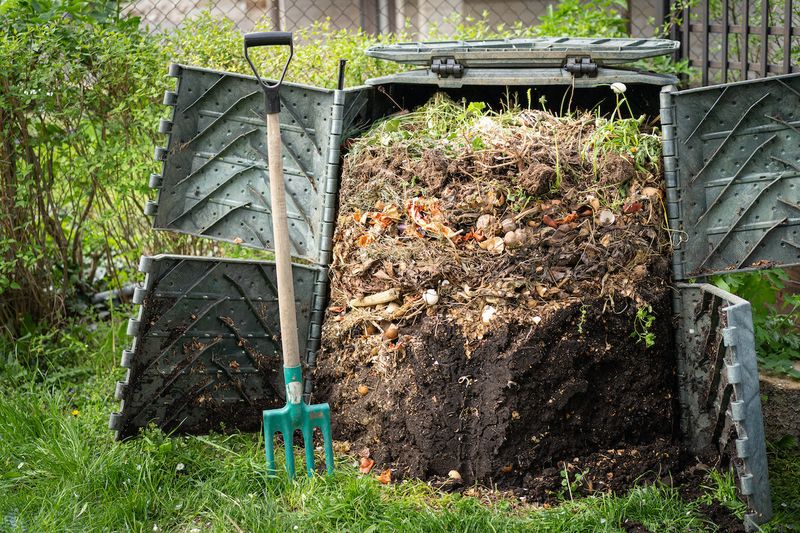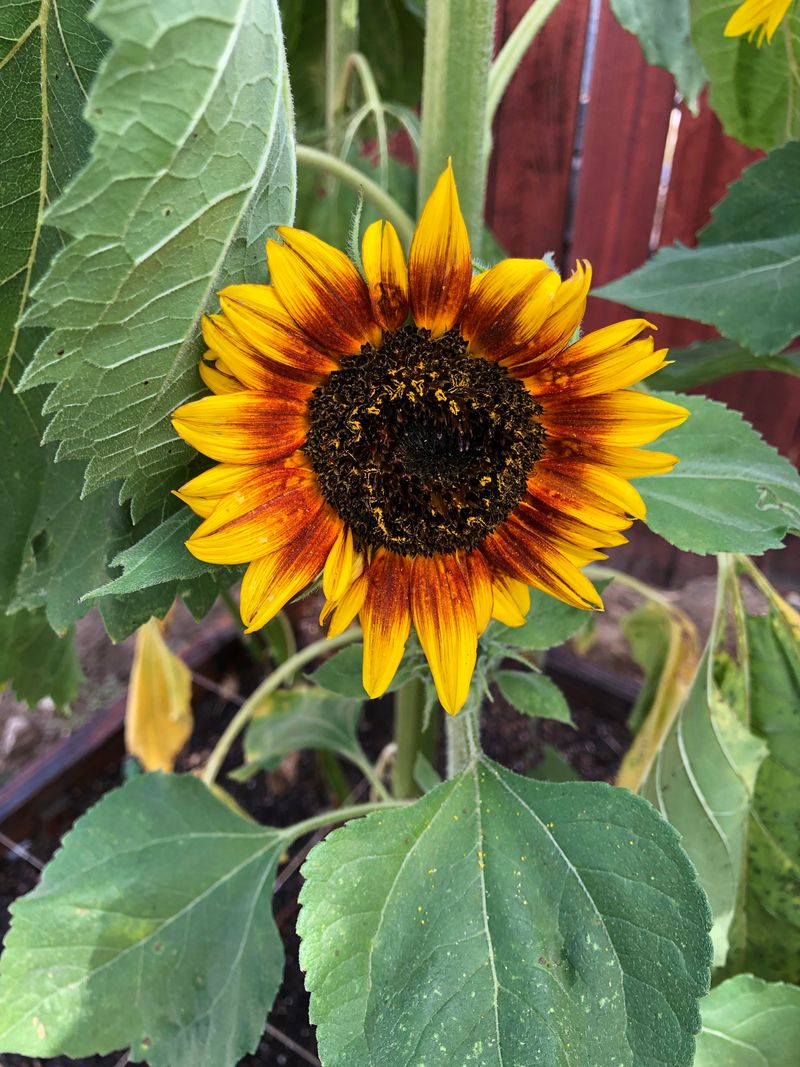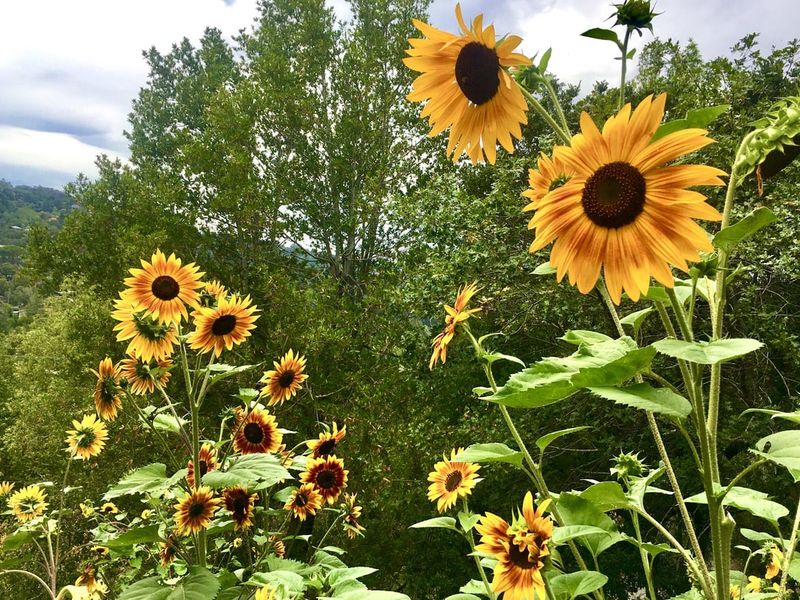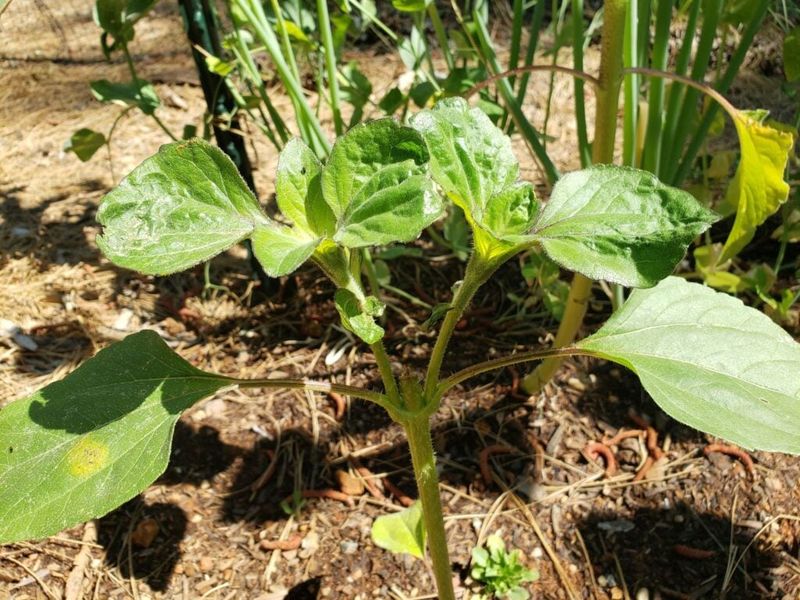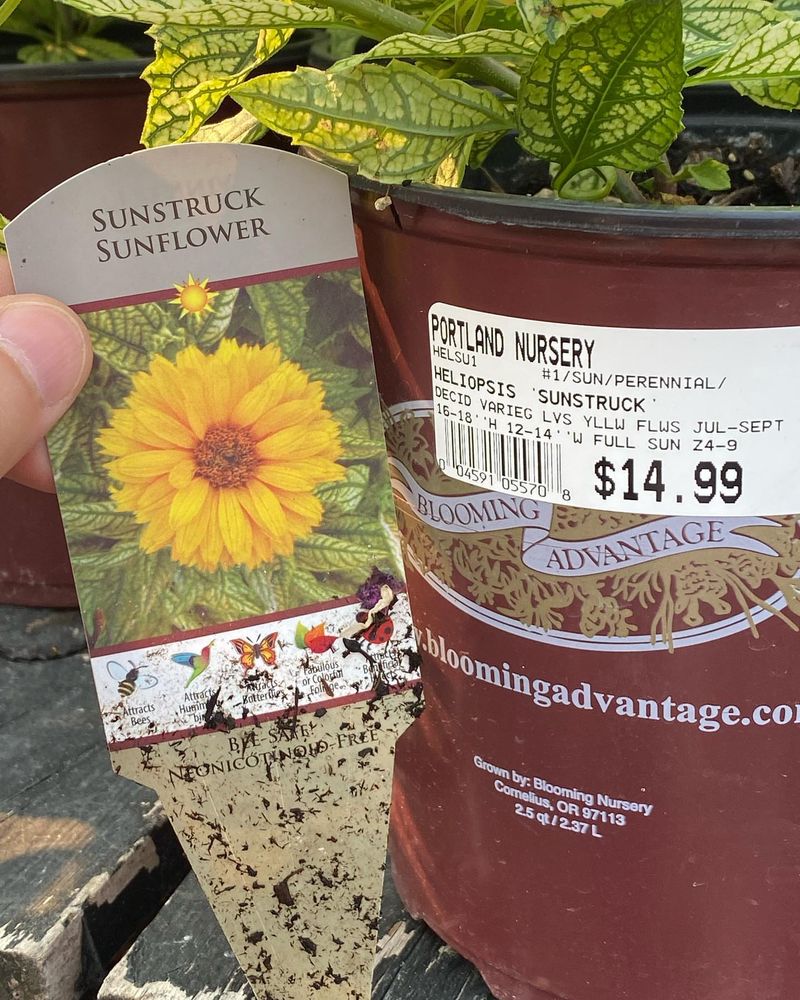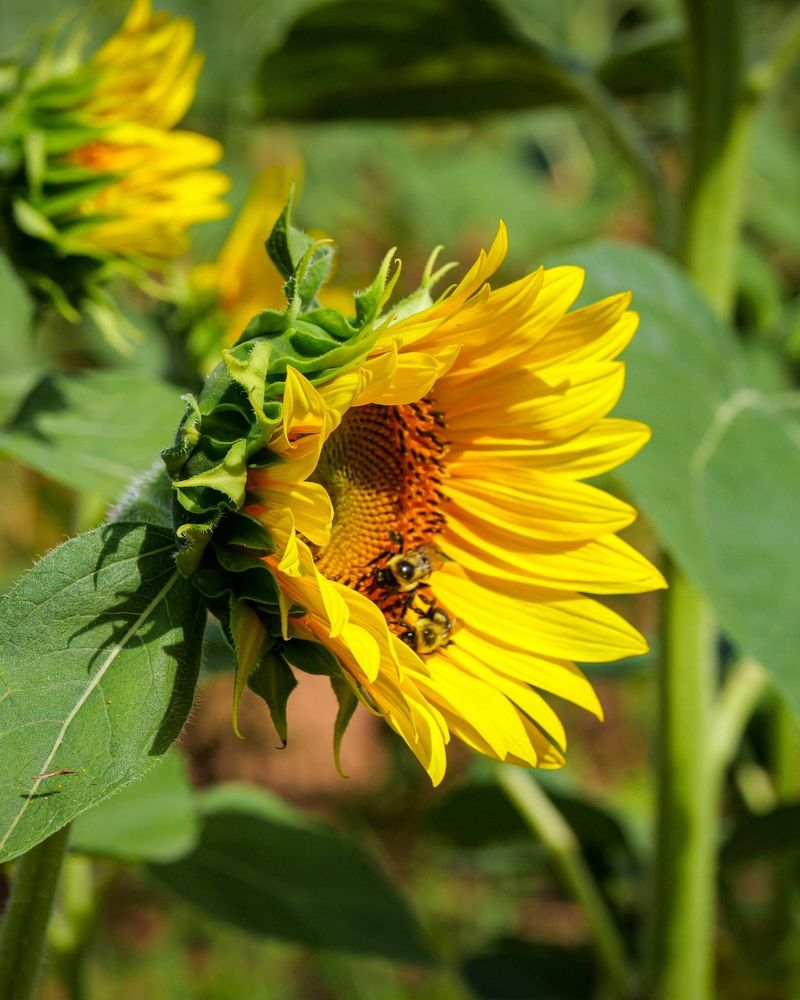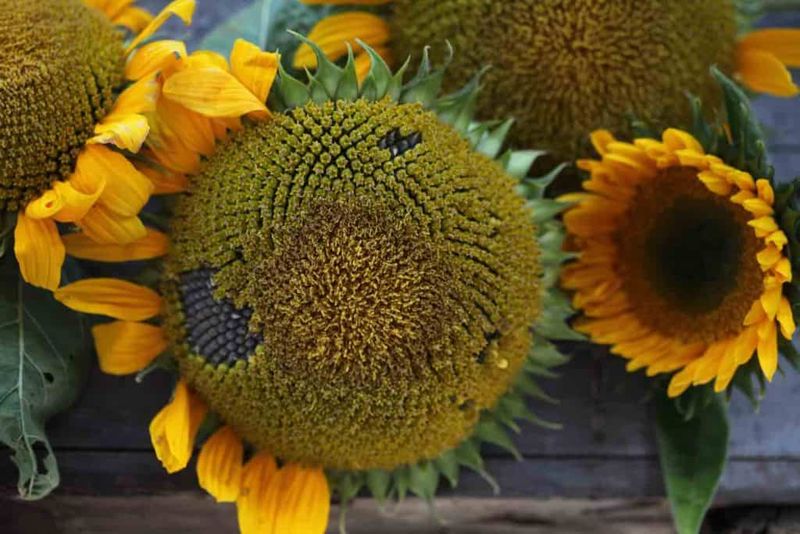Want your sunflowers to keep shining all season? Deadheading—snipping off faded blooms—is a simple trick that encourages new growth and keeps the patch looking vibrant. It also stops the plants from self-seeding all over the place unless that’s the vibe you’re going for.
Use clean shears and cut just below the spent flower head, ideally above a leaf node. This redirects energy into fresh buds instead of drying seeds, turning your sunflower garden into an ongoing display rather than a one-hit wonder.
Not only does deadheading boost flower production, but it keeps your garden looking neat and cared for. It’s a small move with big impact—and your sunflowers will reward you with even more cheerful blooms to brighten the day.
1. Watch For Fading Petals
The first sign it’s time to deadhead is when those bright yellow petals start to droop and fade. They’ll turn from vibrant yellow to a dull brown as the flower completes its blooming cycle.
Keep an eye on your sunflowers daily during peak blooming season. The transition from perfect bloom to spent flower can happen surprisingly quickly, especially during hot weather.
I’ve found that morning inspections work best for me. The early light makes it easier to spot which flowers have begun their decline, and I can plan my deadheading session for the cooler evening hours.
2. Gather Your Tools
Having the right tools ready makes deadheading a breeze instead of a chore. You’ll need sharp pruning shears or scissors, gardening gloves, and a small bucket for collecting the spent blooms.
Clean your cutting tools with rubbing alcohol before starting to prevent spreading any plant diseases. Dull blades can crush stems rather than cleanly cutting them, which can damage the plant.
My favorite time-saving trick is keeping a dedicated deadheading kit in a small tote bag that I can grab whenever I spot a few flowers ready for removal, rather than hunting for supplies each time.
3. Time It Right
Timing matters when deadheading sunflowers. The best moment is right after the petals have wilted but before the seeds have fully formed – unless you’re saving seeds for birds or replanting.
Early morning or evening provides ideal deadheading conditions. The cooler temperatures make the task more comfortable for you, and the plants recover better from pruning during these less stressful parts of the day.
Last summer, I made the mistake of deadheading at high noon and ended up with a sunburn and wilted cuttings. Now I stick to evening sessions when both the garden and I are more relaxed.
4. Identify The Cut Point
Finding the right spot to make your cut is crucial for healthy regrowth. Look down the stem from the spent flower until you find the first set of leaves or a side stem branching out.
Make your cut about ¼ inch above this junction at a slight angle. This angle helps water run off rather than collecting on the cut surface, which could lead to rot or disease.
The first few times I deadheaded, I cut too high and left unsightly stems sticking up. Now I take an extra moment to trace down to find that perfect junction point, which gives much cleaner results.
5. Make Clean Cuts
The quality of your cut affects how quickly the plant heals and whether it will produce new blooms. Always use sharp tools to make clean, decisive cuts rather than tearing or crushing the stems.
Hold the stem below the flower head with one hand to stabilize it, then make a quick, clean cut with your shears. Avoid sawing motions that can damage the plant tissue and create entry points for disease.
I learned this lesson the hard way after using old, rusty scissors one season. The jagged cuts I made led to several stems developing fungal issues, while cleanly cut stems remained healthy and productive.
6. Handle The Stem Carefully
Sunflower stems contain a sticky sap that can irritate sensitive skin and stain clothing. The hollow stems are also surprisingly sturdy and can scratch unprotected hands if you’re not careful.
Always wear gardening gloves when deadheading and hold the stems away from your body and clothing. If you do get sap on your skin, wash promptly with soap and water to prevent irritation.
During my first major deadheading session, I ruined a favorite shirt with sunflower sap stains that never came out. Now I have a dedicated “garden shirt” that already has so many plant stains that a few more don’t matter!
7. Inspect For Pests And Disease
Deadheading time offers a perfect opportunity to check your sunflowers for any problems. As you work, look for signs of insect damage, powdery mildew, or unusual spots on leaves and stems.
Pay special attention to the underside of leaves and where stems branch – common hiding spots for pests. Early detection means easier treatment and better chances of saving affected plants.
I once noticed tiny holes in leaves while deadheading and discovered an early aphid infestation. Because I caught it early, a simple spray of soapy water solution took care of the problem before it spread to neighboring plants.
8. Decide About Seed Heads
Not every spent sunflower needs immediate removal. If you want to attract birds or harvest seeds, leave some seed heads intact until they’re fully developed and beginning to dry out.
Mark these seed-saving flowers with colorful garden twine so you don’t accidentally deadhead them. The birds will thank you for leaving a few seed heads, especially in fall when food sources become scarcer.
My backyard became a goldfinch hotspot last autumn after I left about a quarter of my sunflower heads to mature fully. The cheerful yellow birds hanging upside-down to extract seeds became my favorite garden entertainment.
9. Create A Deadheading Schedule
Regular deadheading keeps sunflowers productive throughout their growing season. Setting up a simple schedule helps ensure you don’t miss the optimal window for removing spent blooms.
For most gardens, checking sunflowers twice weekly during peak blooming season is sufficient. Mark these sessions on your calendar or set phone reminders to maintain consistency.
I keep a small garden journal where I note which varieties respond best to deadheading. My branching sunflowers produce nearly twice as many blooms when regularly deadheaded compared to the seasons when I was less diligent about the task.
10. Manage Multiple Bloom Types
Different sunflower varieties require slightly different deadheading approaches. Single-stem varieties typically produce one main bloom, while branching types develop multiple flower heads over time.
For branching varieties, removing the center head after it fades encourages side branches to develop more flowers. With single-stem types, deadheading won’t produce more blooms but keeps the garden tidy.
The ‘Autumn Beauty’ variety in my garden surprised me with how prolifically it bloomed after I removed the main flowers. What I expected to be a brief show turned into months of continuous color thanks to consistent deadheading.
11. Properly Dispose Of Trimmings
What you do with the cut flower heads matters for garden health. Spent blooms can harbor pests or diseases that might spread if left lying around your garden beds.
Add healthy trimmings to your compost pile, making sure to crush seed heads first if you don’t want volunteer sunflowers next season. Any diseased material should go in the trash, not your compost.
After finding unwanted sunflower seedlings throughout my vegetable garden last year, I now make a point of crushing all seed heads before composting. It’s an extra step that saves hours of weeding later!
12. Water After Deadheading
Giving your sunflowers a drink after deadheading helps them recover from the minor stress of pruning. The plant will direct energy toward producing new blooms rather than recovering from drought stress.
Water at the base of the plants rather than overhead to prevent fungal issues on leaves. A deep watering that reaches the root zone is more beneficial than frequent shallow sprinklings.
I keep a watering can filled and ready beside me during deadheading sessions. This simple habit ensures I don’t forget to water afterward, especially important during the hot summer months when my sunflowers need extra moisture.
13. Apply Light Fertilizer
Producing continuous blooms takes energy, and deadheading encourages plants to keep flowering rather than setting seed. A light feeding helps replenish nutrients needed for this extended performance.
Use a balanced, water-soluble fertilizer diluted to half-strength after every second or third deadheading session. Too much nitrogen can promote leafy growth at the expense of flowers, so don’t overdo it.
My sunflowers responded dramatically to this feeding schedule last summer. The fertilized plants produced noticeably larger secondary blooms than those I left unfed, convincing me that this extra step is well worth the effort.
14. Monitor For New Buds
After deadheading, keep an eye out for new flower buds forming. These typically appear within 1-2 weeks on branching varieties and indicate your deadheading efforts are paying off.
New buds often develop from leaf axils – the points where leaves join the stem. These secondary blooms may be smaller than the main flower but are just as valuable for continuous garden color.
The first time I spotted new buds forming after deadheading, I felt like I’d discovered a gardening superpower! That moment of seeing the plant’s renewed effort to bloom reinforced why this simple maintenance task matters so much.
15. Record Your Results
Keeping notes about your deadheading practices helps improve your technique over time. Track which varieties respond best, optimal cutting points, and how long secondary blooms take to develop.
Simple observations about weather conditions, timing, and plant responses build valuable knowledge for future growing seasons. Even basic notes can reveal patterns you might otherwise miss.
My garden notebook entries from last season showed that deadheading in the evening resulted in faster recovery than morning sessions. This small discovery has improved my success rate with repeat-blooming sunflowers and made the whole process more rewarding.
16. End-Of-Season Considerations
As growing season winds down, your deadheading strategy should shift. In late summer or early fall, consider leaving the final round of blooms intact for wildlife and seed collection.
These last seed heads provide natural food for birds throughout fall and winter. Mark your calendar with your region’s first expected frost date to help time this final transition from deadheading to seed saving.
Watching goldfinches, chickadees, and nuthatches visit my sunflower patch throughout fall became an unexpected joy after I stopped deadheading in mid-September. Their antics harvesting seeds were worth every “messy” seed head I left standing.
17. What Happens If You Don’t Deadhead
Skipping deadheading isn’t the end of the world, but it does have consequences. Undeadheaded sunflowers focus their energy on seed production rather than creating new blooms, significantly shortening their flowering period.
The spent flower heads eventually shatter, dropping seeds everywhere and potentially creating a forest of volunteer sunflowers next season. The dying blooms can also look unsightly and may attract pests looking for places to lay eggs.
One year I experimented by deadheading half my sunflower patch while leaving the rest untouched. The difference was striking – the deadheaded section bloomed for nearly six additional weeks while the untouched plants quickly went to seed and stopped producing.

